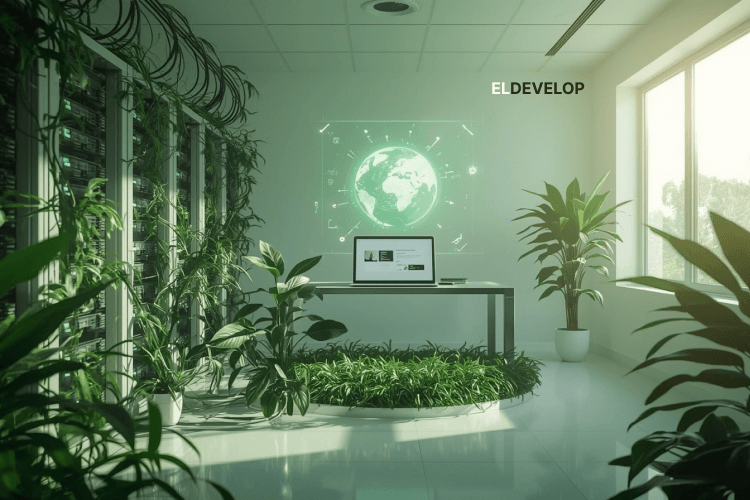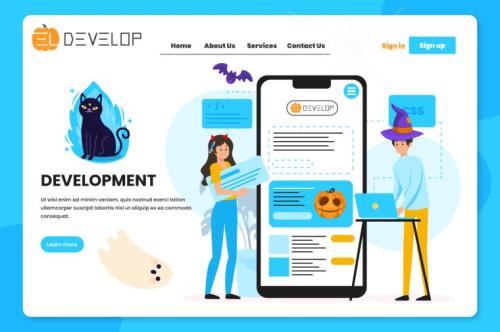
Embracing Sustainability: Green IT Practices for Businesses
As global attention shifts toward climate change and environmental responsibility, businesses must reevaluate every aspect of their operations—including how they use technology. While digital transformation has delivered efficiency and innovation, it has also increased energy consumption and e-waste. At ELDEVELOP, we actively integrate Green IT principles into our web development processes, ensuring that our solutions are both high-performing and environmentally conscious. Green IT offers a strategic, responsible way forward for companies looking to combine digital growth with sustainability.
Understanding Green IT
Green IT, or sustainable IT, is the practice of designing, managing, and using technology in a way that minimizes environmental impact. It spans the entire IT ecosystem—from hardware and software to cloud infrastructure and web platforms. In web development, this includes building lightweight, efficient websites that consume fewer resources, optimizing back-end systems for minimal server load, and reducing unnecessary data transmission.
The Growing Need for Green IT
Information technology is a major contributor to energy use and e-waste. Websites and online services are accessed billions of times per day, consuming server resources and electricity with every request. Poorly optimized websites can lead to excessive energy consumption, especially when hosted on inefficient infrastructure.
With increasing demand for real-time experiences, rich media, and AI-driven personalization, the web is becoming heavier—both digitally and environmentally. That's why sustainable web development is no longer optional. Clean code, optimized assets, and mindful design directly impact energy usage and carbon emissions.
Practical Green IT Practices
Why Quality Assurance Is the Unsung Hero of Web Development
One of the most impactful strategies in sustainable web development is building performance-first websites. Efficient websites not only load faster for users but also reduce data center load and network strain. This includes compressing images, minimizing JavaScript, leveraging caching, and using modern frameworks that prioritize performance.
Choosing green hosting providers is another crucial step. Many data centers now run on renewable energy or carbon-neutral operations. Web developers can make a tangible difference by deploying websites and applications on infrastructure committed to sustainability.
Code efficiency also plays a critical role. Writing clean, reusable code and avoiding bloated libraries help reduce processing power on both server and client sides. On mobile devices, this translates to lower battery consumption and improved user experience.
From a UX and design perspective, avoiding unnecessary animations, reducing auto-playing media, and embracing dark mode options can also support sustainability. These small changes, when scaled across thousands of sessions per day, lead to measurable environmental benefits.
Lifecycle Thinking and Responsible Infrastructure
Beyond development itself, businesses must manage the entire lifecycle of their digital presence. This includes decommissioning outdated websites, cleaning up unused databases, and avoiding digital waste. Old or duplicated content, excessive tracking scripts, and abandoned admin panels all consume resources—often invisibly.
Selecting scalable infrastructure that adjusts to actual user demand can further reduce energy waste. Serverless architecture, auto-scaling cloud solutions, and intelligent load balancing help ensure that web applications consume resources only when needed.
What are some top tools and technologies used in IT services?
Business Value and Strategic Impact
Implementing Green IT in web development is not just good for the planet—it makes business sense. Faster, more efficient websites improve SEO rankings, reduce bounce rates, and enhance user satisfaction. Companies that adopt sustainable practices often see lower hosting costs, better accessibility, and improved brand reputation.
Additionally, corporate sustainability reports and ESG metrics increasingly account for digital operations. Businesses that consider the environmental footprint of their online platforms show greater responsibility and long-term thinking.
A Future-Focused Approach
Green IT should be embedded into business and development strategy—not treated as an afterthought. Setting performance budgets, incorporating environmental checks into QA processes, and using tools like carbon calculators for websites are all practical steps toward responsible development.
Sustainable web development is a natural evolution of quality-focused design. It aligns with accessibility, performance, security, and usability—all essential pillars of a future-proof digital presence.
As the world shifts toward more conscious and responsible use of technology, web development must follow suit. By embracing Green IT practices—from infrastructure choices to front-end performance—businesses can significantly reduce their environmental impact while building better, faster, and more ethical digital products.
Sustainability is not a limitation—it's an opportunity to innovate and lead. And in web development, it starts with thoughtful, efficient, and intentional design.
Recent Articles
- Why Quality Assurance Is the Unsung Hero of Web Development
- Dark UX: Scary Design Mistakes That Haunt Users
- Ranking the Top Mobile App Development Companies: Who Leads the Industry in 2025
- Top WordPress Developers in the Industry (2025 Edition)
- Alternatives to Bootstrap: MaterializeCSS and Tailwind CSS


